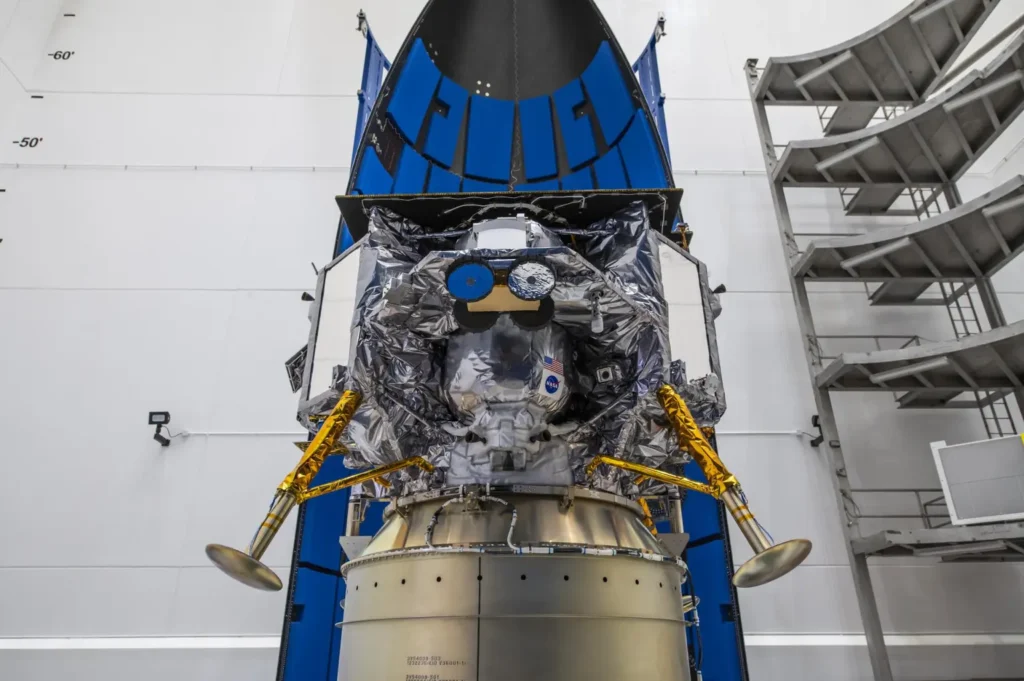Hello Everyone! Welcome to SasVibe. NASA is set to make history once again with the upcoming launch of a United Launch Alliance (ULA) rocket, carrying Astrobotic’s robotic lander as part of the Artemis program. This mission, which aims to pave the way for future human and robotic exploration of the Moon, marks a significant milestone in space exploration. Here’s everything you need to know about this exciting event.
The Artemis Program: A Brief Overview
The Artemis program is NASA’s ambitious project to return humans to the Moon by 2024, with a long-term vision of establishing a sustainable human presence on the lunar surface by the end of the decade. Named after the Greek goddess of the Moon, Artemis, the program is not just about manned missions. It includes a series of robotic missions designed to gather critical data, test new technologies, and prepare the lunar environment for human exploration.
The Mission Details
Launch Vehicle and Provider
The upcoming mission will be launched aboard a United Launch Alliance (ULA) rocket. ULA, a joint venture between Lockheed Martin and Boeing, is known for its reliable and efficient launch services. The rocket chosen for this mission is designed to deliver payloads accurately and safely to their designated orbits, ensuring the success of the mission.
Astrobotic’s Robotic Lander
Astrobotic Technology Inc., a Pittsburgh-based company specializing in lunar and planetary exploration, is providing the robotic lander for this mission. The lander, named Peregrine, is set to deliver a suite of scientific instruments, technology demonstrations, and commercial payloads to the lunar surface. Peregrine’s mission is to test new technologies and gather data that will be crucial for future manned missions.
Objectives and Scientific Goals
The primary objective of this mission is to gather data that will aid future Artemis missions. This includes:
- Testing New Technologies: The mission will test various technologies that are crucial for future lunar exploration, such as precision landing systems, autonomous navigation, and advanced communication systems.
- Scientific Research: The payloads aboard Peregrine include scientific instruments designed to study the lunar surface, environment, and potential resources. This data will help scientists understand the Moon’s geology and assess its suitability for sustained human presence.
- Commercial Partnerships: The mission also represents a significant step in fostering commercial partnerships in space exploration. By involving private companies like Astrobotic, NASA aims to promote innovation and reduce costs.
Launch Schedule and Coverage
NASA has announced comprehensive coverage plans for the launch. The event will be broadcast live on NASA TV and streamed on the agency’s website, providing real-time updates and expert commentary. The coverage will include pre-launch briefings, live countdown updates, and post-launch analysis. This ensures that space enthusiasts and the general public can follow every step of this historic mission.
The Importance of this Mission
This mission is a critical step in the Artemis program and NASA’s broader goal of exploring the solar system. By successfully deploying a robotic lander to the Moon, NASA and its partners will gain invaluable insights that will inform future missions, both manned and unmanned. The data collected will not only help in planning human exploration but also in developing technologies that could be used for missions to Mars and beyond.
Moreover, this mission underscores the importance of international and commercial partnerships in space exploration. By working with private companies like Astrobotic and leveraging their expertise, NASA can accelerate its goals and make space more accessible.
Conclusion
As NASA gears up for this historic launch, the excitement is palpable. The ULA rocket carrying Astrobotic’s Peregrine lander is not just a step towards returning humans to the Moon but a giant leap for future space exploration. Stay tuned for more updates and prepare to witness history in the making. For more details and live coverage, visit NASA’s official website and ULA’s launch page.



